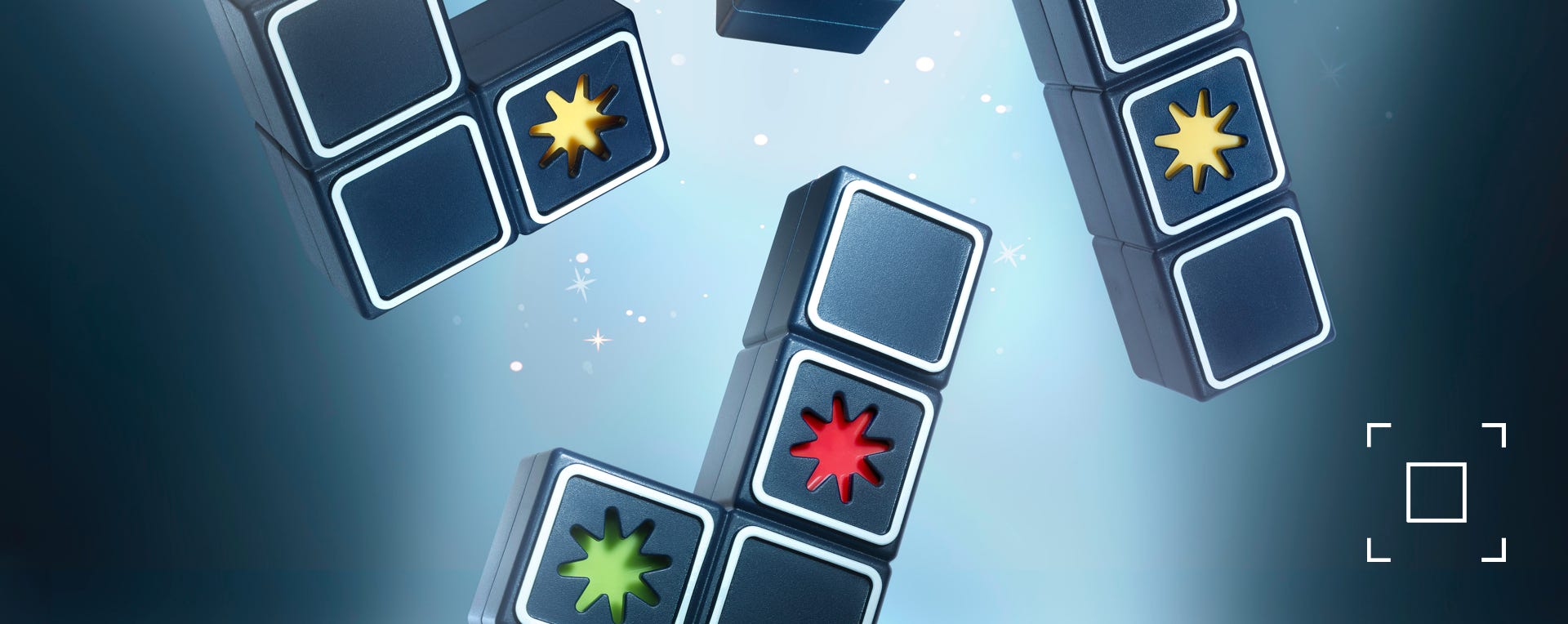Shooting Stars
The product development of Shooting Stars (for SmartGames)
Raf Peeters, January 2020
As a child a lot of things interested me. I always wanted to know how things worked or why the world is as it is. As a designer it is very helpful to have many interests, because they are often a good starting point for a new product. “Shooting Stars” was inspired by one of my hobbies as a child: magic. Some tricks are based on some very simple technical mechanisms, that are hidden for the public.
NOW YOU SEE ME… NOW YOU DON’T!
In a way there are some similarities between this puzzle game and “Penguins on Ice”. The start for both products was the use of a few very simple puzzle pieces. But how can you make 60 or more challenges with only a few blocks and still keep the game interesting enough? In both games this is accomplished by using blocks that transform. In Penguins on Ice the player transforms the shape of the puzzle pieces. In Shooting Stars the shape of the puzzle piece remains the same, but the color of the stars magically changes, depending on how you orientate the piece. And as a player you don’t have control over this change, because it’s caused by gravity.
In the first version I only used 3 blocks, because the game was intended as a preschool game. Simple blocks, you know… On the inside there was a cylindrical shape in different colors. Although the outside of the blocks is straight, on the inside there are small ramps. So when you place a block horizontally, the cylinder will roll from one side to the other one. But if you rotate the block 90° or 180°, the cylinder rolls to the opposite side. We made prototypes and this concept worked perfectly. The only downside was that the stars showed a “black hole” when the cylinder rolled to the other side. So we slightly changed the mechanism. Instead of one cylindric shape, each block includes colored disks of only a few mm thick. On the inside of each block there is also a colored insert made of two parts. This way, for each block there are 4 different colors possible, depending on what you see through the star window:
- colored disk on frontside of the block
- colored disk on backside of the block
- no colored disk, so you will see the insert on the frontside of the block
- no colored disk, so you will see the insert on the backside of the block
Sometimes the insert or the disk is the same color as the block, so that it looks like the colored star disappears.
For the color of the blocks we opted for a very dark blue, almost black, so that the colors of the stars would stand out. We accentuated the squares in each block with a white outline. When you make a construction, you only see the squares and stars, but the position of individual blocks becomes unclear, similar to how a tangram only shows the outline. When I explained the final concept to my colleagues, many argued that the game would be too hard for a young child, so we decided to add an extra fourth block and make it a 6+ game instead of a preschool game.
So the final version uses 4 different blocks. Each block has 1 star shaped cutout on each side, except the big L-shaped block which has two stars on each side. All blocks show on one side either a yellow star or no star (a black star). On the other side stars are either red, green or blue. We tried out many different options for the stars and inserts, before we chose the current one. When you make a construction, it should not immediately be evident which block goes where. Especially the position of the big L-shaped block can be easy to find, because it always shows 2 stars that are not adjacent but close to each other. Therefor, some colors for the stars are used several times. If you see a red star, it’s still not immediately clear which block this star is part of. Finding the perfect set of blocks and colors is (as always) finding the best balance between not too many and not too few options. If we chose colors with too many options, there would not be enough challenges with a unique solution. But if we choose colors with too few options, the challenges would be very easy, because it would always be immediately clear which block goes where.
A TRICKY GAME
Each level has a different type of challenges (see game rules at the bottom of this webpage). There are 4 levels and 80 challenges in total. All challenges have only 1 possible solution as usual. To really understand the game, you need to see it in action. Often, when you think you found a solution, some stars change their color making your solution invalid. This is because there is a small delay between the moment you rotate a block, the moment you place a block in a stable way and the moment the colored disks behind the stars roll to their position. You can find a demonstration movie on the official Youtube channel of SmartGames.
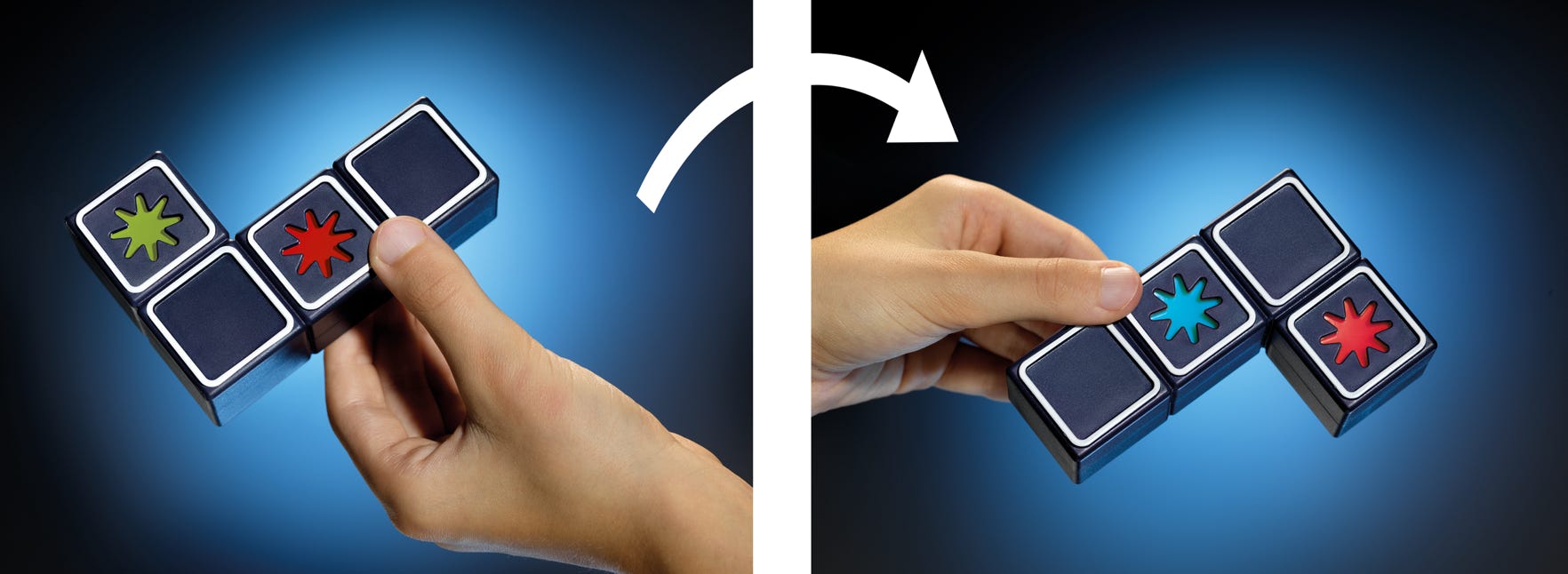
the colors of the stars change when you rotate the block
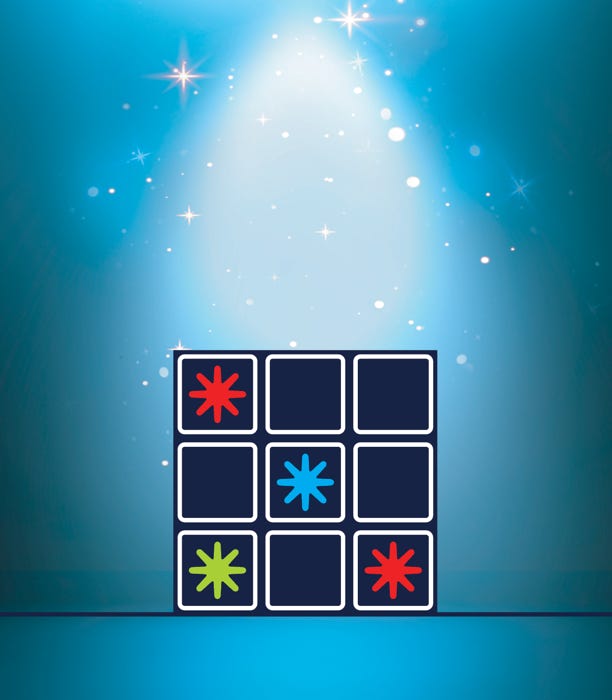
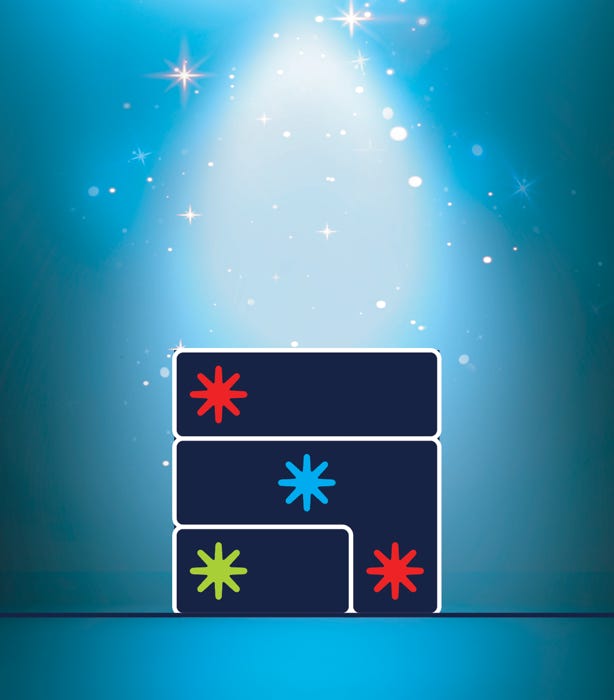
Junior challenge (left) and solution (right) of Shooting Stars, using 3 blocks
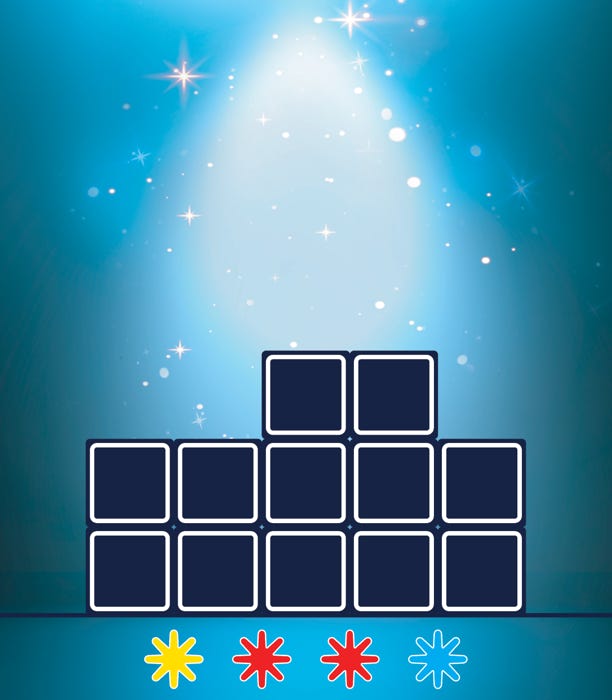
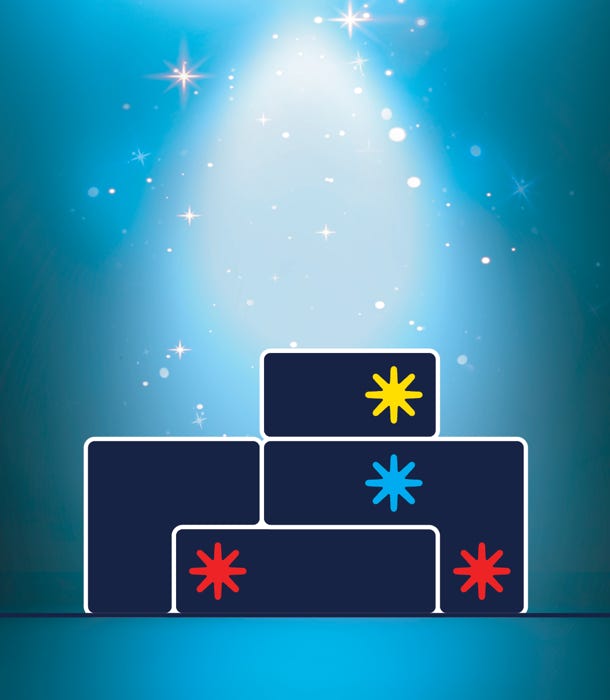
Master challenge (left) and solution (right) of Shooting Stars, using all blocks and showing 1 yellow, 2 red and 1 blue star
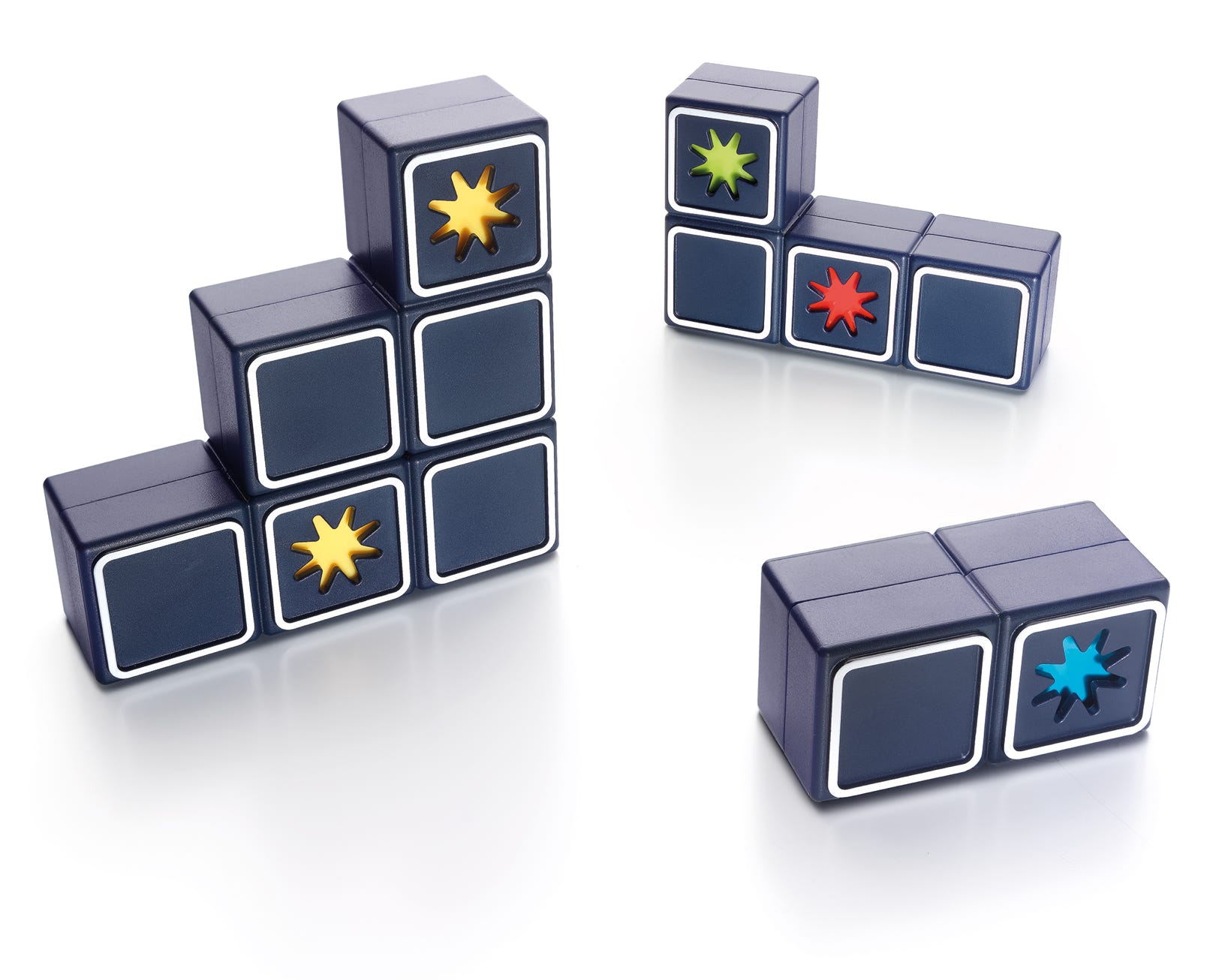

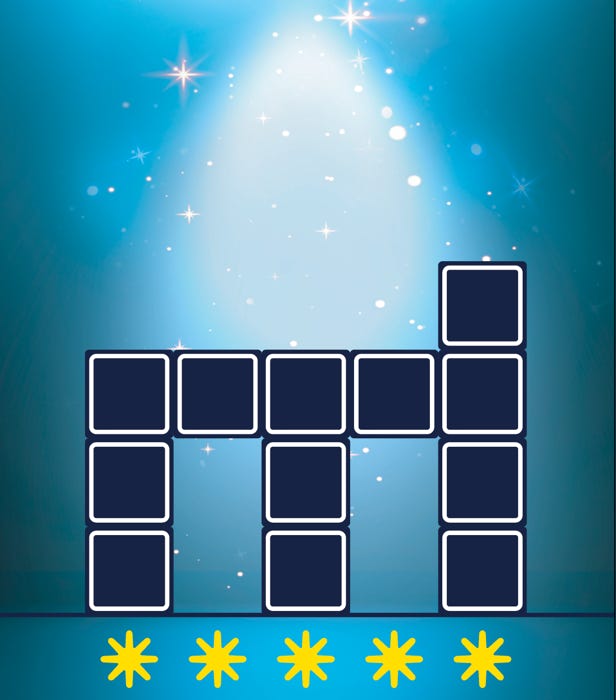
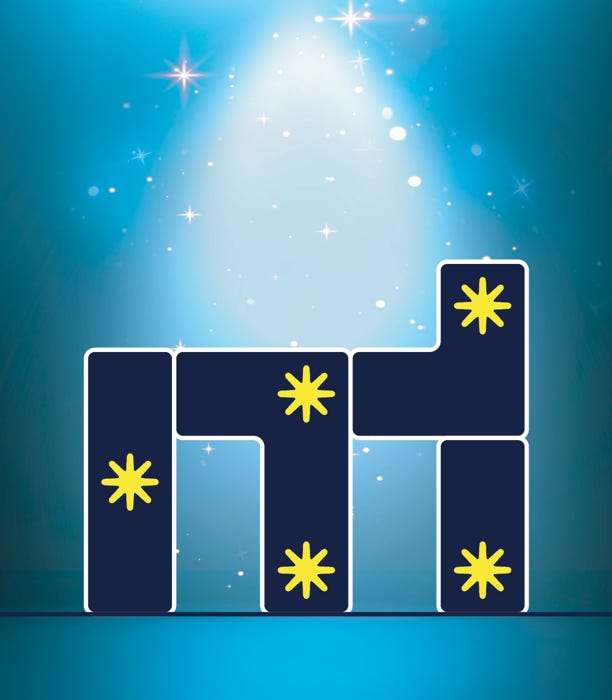
Expert challenge (left) and solution (right) of Shooting Stars, using all blocks and showing 5 yellow stars
GAME RULES SHOOTING STARS
Before you start: Use a stable table when playing. Ample light is helpful, the best position is sitting with your back to a window or lamp, so light can shine on the front side of the blocks. This helps distinguish the different (and changing) colors of the stars. Make sure your table is level, because the mechanics of the blocks will work differently if it’s not.
1) Select a challenge.
2) Stack the blocks on top of each other to make a construction that matches the challenge.
• Starter / Junior levels: Challenges show a construction with colored stars (green, red, blue). The position AND the colors of the stars on the front side should be identical to the challenge. For the starter challenges you only need 2 or 3 blocks. For the Junior level, you need to use all 4 blocks.
• Expert level: Challenges show a construction made with 4 blocks. The challenge doesn’t reveal the position of the stars anymore, but all solutions must show 5 YELLOW stars!
• Master level: Challenges show a construction made with 4 blocks. At the bottom of each challenge information about the color of the stars is given, but not their position. If a challenge shows fewer than 5 stars, this means that some windows in the blocks will show a BLACK star.
3) There is only 1 solution, which can be found at the end of the booklet.
Website ©2020 Raf Peeters
Products and images: © Smart
